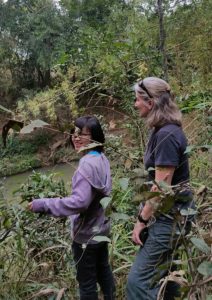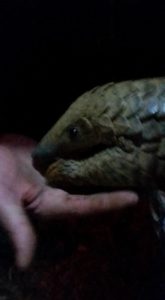We have much more to do and your continued support is needed now more than ever.
Wildlife Conservation in the U.S. and Southeast Asia
Last month, the National Wildlife Federation’s educational and conservation-based mission traveled with me to Laos and Vietnam.
Through a professional exchange sponsored by the U.S. Department of State by the Young Southeast Asian Leaders Initiative (YSEALI) and managed by the University of Montana’s Mansfield Center, the National Wildlife Federation hosted two young conservation professionals in October, 2015 in Missoula, Montana. In turn, I was fortunate to visit Lamngeun (Aor) Manivong of the Rural Development Agency in Vientiane, Laos, and Thai Van Nguyen of Save Vietnam’s Wildlife, located at Cuc Phuong National Park southwest of Hanoi.


In Vietnam, I spent most of my time at Cuc Phuong National Park, the home of Save Vietnam’s Wildlife and three endangered species rescue and rehabilitation centers. As described in a recent issue of National Wildlife, Save Vietnam’s Wildlife works to stop illegal trade of the pangolin—an obscure yet charming scaled mammal that fetches astronomical prices in illegal markets throughout Vietnam, China, and beyond.
In addition to receiving confiscated pangolins and preparing them for release into protected habitat (a call came while I was there that fifteen new animals were seized and ready for pick up), Save Vietnam’s Wildlife advocates for tougher laws and stronger enforcement, and conducts education and outreach to youth and to communities that hunt and use pangolin products for food and traditional medicine.
When Thai was in Montana last fall, he visited the Missoula-based Rocky Mountain Elk Foundation, whose educational display tells the story of North American wildlife conservation: from exploitation to awareness, and from mobilized citizens to national organizations advocating for wildlife. Thai wrote a blog about the cognitive dissonance he felt when he saw the banner proclaiming that “Hunting is Conservation,” but he kept an open mind as he spent time in the field with a game warden, sat in on NWF meetings involving sportsmen, and developed an uneasy appreciation for hunters’ role in protecting habitat and species conservation.
So, in Vietnam, Thai urged me to tell the story of North American conservation–with the hunting element fully included—in presentations at the U.S. Embassy in Hanoi and at a workshop for rescue center staff and leadership at Cuc Phuong National Park.


Forests in both countries are increasingly barren of the charismatic and fascinating species that have lived here and whose modest harvests have sustained local populations for countless generations. A farmer who chooses to leave a rare turtle where he finds it traversing his rice paddy is making a significant economic sacrifice, with no guarantee that his neighbor won’t pick it up and sell it to a wildlife trader.
Thai told me his vision that local people will benefit from wildlife protection rather than exploitation, and will become a constituency for wildlife protection much as hunters did in the United States following decades of market-driven devastation. Recognizing the promise of his approach, Thai is a recipient of the prestigious 2016 Future for Nature conservation award, and will travel this spring to The Netherlands to share his conservation work with an international audience.
From this professional exchange, I gained an appreciation for the persistent and necessarily creative work of young leaders like Aor and Thai, who identify and address conservation issues linked to rural poverty, inadequate government sector support, and external pressures for exploitation. Each has benefitted from working with YSEALI and other professional networks, but they need more resources and support from the international community.
Join NWF Join the National Wildlife Federation and our conservation efforts!





















